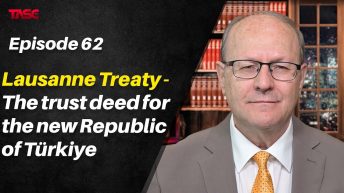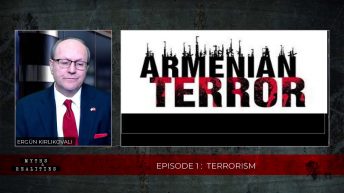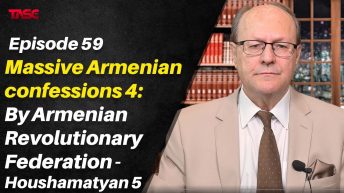It is shown in Episode 33, thanks to Dr. Heath Lowry’s meticulous research, how Armenian writers use only those sources that support their allegations and ignore all the rest. Hovannisian and Hovsepian keep recycling the same selective sources to arrive at erroneous conclusions. We continue with Dr. Heath Lowry’s work involving American, British, and Austrian eyewitnesses and American archives. Going back to the Prentiss’s eyewitness testimony, we see on page 5 hints at the source of the fire which ultimately destroyed Izmir. Fire chief Grescovich found evidence if incendiarism. He told Prentiss that early that morning he had seen two Armenian priests escorting several thousand people from the Armenian schools and Churches down to the quays. When Grescovich went into those institutions, he found petroleum-soaked refuse ready for torch.” It is also noted that “ Grescovich himself stated that his own firemen, as well as Turkish guards, had shot down many Armenian young men disguised either as woman or as Turkish irregular soldiers, who were caught setting fires during Tuesday night [Sept. 12th] and Wednesday [Sept 13th] morning.” On page 6, Grescovich described Turkish response to the fires in the following terms: “ Shortly after noon [Wednesday, Sept. 13th] Grescovich convinced that Izmir was doomed, again went to the military authorities to ask for help, and again it was not forthcoming. It was not, until six o’clock in the evening that he was given a company of 100 soldiers to serve under his direction and it was eight o’clock at night before soldiers began the destruction of buildings by bombs in order to check the spread of the fire. “ No serious discussion of the burning of Izmir is possible without taking under consideration the account by Grescovich, the individual charged with fighting the fire. As a case in point, we may cite Housepian’s one example of an American eyewitness who claimed to observe Turkish soldiers lighting fires in the city. Her source is the American Vice-Consul Maynard Barnes who she states on page 155: “Had seen Turkish soldiers pouring gasoline liberally along the street in front of the consulate, was meanwhile working feverishly to save the consular records.” Barnes’ account, the most frequently cited source of official Turkish complicity in the fire, appears somewhat differently in the official American account compiled by Hepburn. There, in describing the events of Thursday evening, September 14th, the following description is given on page 33: “ The fire continued to burn throughout the night though considerably diminished. Several separate fires were observed to start in locations distant from the general conflagration, plainly indicating incendiarism. The Passport office, located upon the North pier of the inner harbor, burned after midnight with many heavy explosions, probably caused by gasoline, as a number of drums had been observed in and near this building a day or two previously. This building was only a few hundred yards from the USS ‘Litchfields’ anchorage, and the actions of the person that fired it were plainly observed by Vice-Consul Barnes from the forecastle, although the distance was too great to allow of any sort of identification.” Recalling Grescovich’s account of attempts to halt the spread of the fire, it is clear that from six o’clock on the evening of Wednesday, September 13th forward, a company of 100 Turkish soldiers, under his orders were destroying buildings by bombs, in an attempt to check the spread of the fire, as can be read on pages 5 and 6. In other words, any description of uniformed Turkish soldiers lighting fires in the city, which occurs after 6: 00 pm on Wednesday the 13th September, may be assumed to be part of the fire-fighting rather than incendiary attempts. Vice-Consul Barnes offered his assessment of the fire in another document in the Bristol Papers. As in the case of the Prentiss report, Housepian conveniently ignored Barnes’ conclusions: “ American press accounts of the Smyrna irregularities arriving here contain gross exaggerations and untruths. Atrocities committed in the interior by Greeks and Armenians outstrip those committed by the Turks in Smyrna in savagery and wanton destruction. Majority of the Americans here believe Smyrna fired by Armenians.“ (For more information, please watch the clip.)
Myths and Realities




Add comment